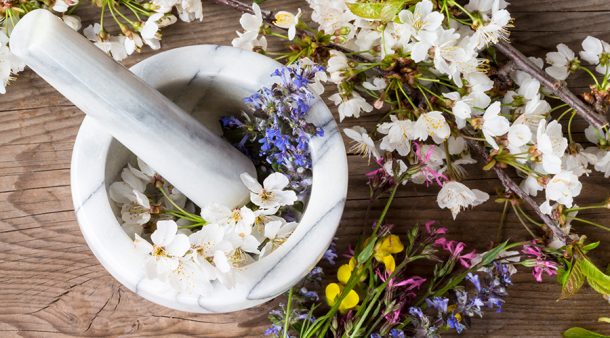
Understanding Osteoarthritis and Natural Ways to Manage It
Osteoarthritis (OA) is a joint condition that causes pain, inflammation, and swelling where bones meet. As the most common form of arthritis, OA can impair joint mobility, reduce the range of motion, and significantly impact the quality of life. It affects millions of Americans, with up to 80% of people over 50 experiencing some form of OA. Unlike rheumatoid arthritis, OA is a degenerative disease characterized by the breakdown of cartilage. Factors like aging, excess weight, joint trauma, over-exercise, and general wear and tear contribute to cartilage damage. Commonly affected joints include the hips, knees, spine, and hands.
Causes and Theories of Osteoarthritis
Several theories explain the development of OA. The most apparent cause is the deterioration of articular cartilage due to aging and overuse. Another theory suggests that toxic blood leads to acid buildup in the joints, inducing inflammation. Diet plays a role, as many Americans have a high-acid diet, contributing to joint pain. Adopting a more alkaline diet can significantly reduce symptoms. There is also evidence pointing to systemic factors such as hormonal influences, nutrient deficiencies, and muscle weakness. Recent research even suggests that OA may be a vascular disease of subchondral bone.
Managing Osteoarthritis: Goals and Therapies
The primary goals for managing OA include slowing disease progression, reducing pain and inflammation, preventing deformities, and improving the quality of life. Both rest and exercise are crucial. Getting at least 8 hours of sleep nightly is essential, but too much rest can stiffen joints. Low-impact exercises such as walking, swimming, yoga, and cycling can help maintain joint flexibility, reduce stiffness, and improve overall mood. Incorporating supplements like glucosamine sulfate and omega-3 fatty acids can also aid in joint health by reducing inflammation and supporting cartilage repair.
Hot and cold therapy can provide relief from arthritis pain. Heat increases blood flow and flexibility, while cold therapy can numb the nerves around the joints, reducing pain and swelling, especially during acute inflammation. For long-term relief, combining these therapies with herbal supplements like curcumin and ginger can offer natural COX-2 inhibition, reducing pain and inflammation without the side effects associated with prescription medications.
Diet and Osteoarthritis
Diet is closely connected to joint health and pain management. A balanced diet focusing on alkaline foods can help reduce acidity in the body, thus minimizing inflammation. Identifying and avoiding food allergens like dairy, gluten, and corn is also vital, as these can trigger inflammation. Foods that fight pain and inflammation include those rich in flavonoids, such as berries, and sulfur-containing foods like garlic and onions. Limiting foods that promote inflammation, such as processed meats, refined sugars, and nightshade vegetables (e.g., tomatoes, potatoes), can alleviate OA symptoms. Including supplements like vitamin C and bioflavonoids can strengthen joints and promote cartilage repair.
Natural COX-2 Inhibitors and Supplements for Osteoarthritis
COX-2 is an enzyme involved in inflammation and pain. Natural COX-2 inhibitors like curcumin, ginger, and boswellia can reduce pain and inflammation in OA without the risks associated with conventional drugs. For those seeking natural pain relief, the following supplements can support joint health:
- Glucosamine Sulfate and Chondroitin Sulfate: These supplements are crucial for maintaining healthy cartilage and reducing OA symptoms. Glucosamine helps repair and regenerate cartilage, while chondroitin sulfate supports joint lining, reducing pain and inflammation. For effective relief, combine glucosamine sulfate with omega-3 fatty acids.
- Omega-3 and Omega-6 Fatty Acids: Found in flaxseed, fish oil, and evening primrose oil, these fatty acids reduce inflammation and lubricate the joints, improving mobility and reducing pain.
- Hyaluronic Acid: This naturally occurring substance cushions and lubricates joints, aiding in joint comfort and flexibility.
- MSM (Methylsulfonylmethane): Rich in sulfur, MSM supports connective tissue formation, reducing pain and inflammation associated with OA. When combined with vitamin C, MSM can enhance joint integrity and reduce discomfort.
Hot and Cold Therapy for Pain Management
In addition to supplements and dietary adjustments, hot and cold therapy can help manage osteoarthritis pain. Heat therapy, using moist heating pads, warm towels, or a hot bath, can improve blood flow and flexibility in the affected area. Conversely, cold therapy, like ice packs or cold-water soaks, can reduce swelling and numb the nerves around inflamed joints. This approach is especially helpful for acute inflammatory episodes.
Exercise and Physical Therapy
Physical activity is essential for managing OA symptoms. Low-impact aerobic exercises like walking, swimming, and yoga can improve joint strength and flexibility. Stretching exercises increase flexibility and reduce stiffness. Consulting a physical therapist for personalized exercise plans can further enhance joint function and alleviate pain. Regular exercise also helps maintain a healthy weight, reducing the stress on joints and decreasing the progression of OA.
Dietary Adjustments for Joint Health
The right diet can significantly affect osteoarthritis symptoms. Avoiding foods that induce inflammation, such as nightshades, refined sugars, and processed foods, is crucial. Instead, focus on consuming anti-inflammatory foods like berries, garlic, and onions. Alkaline-rich foods, including leafy greens and whole foods, can help neutralize body acidity, reducing joint inflammation. Incorporating supplements like vitamin D3, calcium, and magnesium can support bone health and normal cartilage turnover, essential for managing OA.
Additional Supplements and Treatments
- Vitamin D3, Calcium, and Magnesium: These nutrients are essential for bone and cartilage health. Vitamin D3 deficiency is linked to OA progression, while calcium and magnesium support bone density and muscle function.
- Herbal Support: COX-2 inhibiting herbs like boswellia and turmeric offer natural pain relief by reducing inflammation. Green-lipped mussel extract, derived from New Zealand coastal waters, provides omega-3 oils effective for managing inflammation in OA.
- Topical Treatments: Arnica gel can relieve OA pain when applied topically, reducing inflammation without the side effects of oral medications. Other topical remedies include MSM cream and capsaicin.
Acupuncture and Other Therapies
Acupuncture has shown significant benefits in reducing OA pain. By stimulating specific points on the body, acupuncture can help release natural pain-relieving chemicals, improving joint function and reducing inflammation. This treatment, combined with dietary changes and natural supplements like collagen hydrolysate, offers a holistic approach to managing osteoarthritis effectively.
Conclusion
Osteoarthritis can significantly impact daily life, but natural management strategies can provide relief. A holistic approach that includes dietary adjustments, physical activity, hot and cold therapy, and natural supplements like glucosamine sulfate, omega-3 fatty acids, and COX-2 inhibiting herbs can help reduce pain and inflammation. Incorporating these practices into daily routines can slow the progression of OA, improve joint function, and enhance overall well-being.


